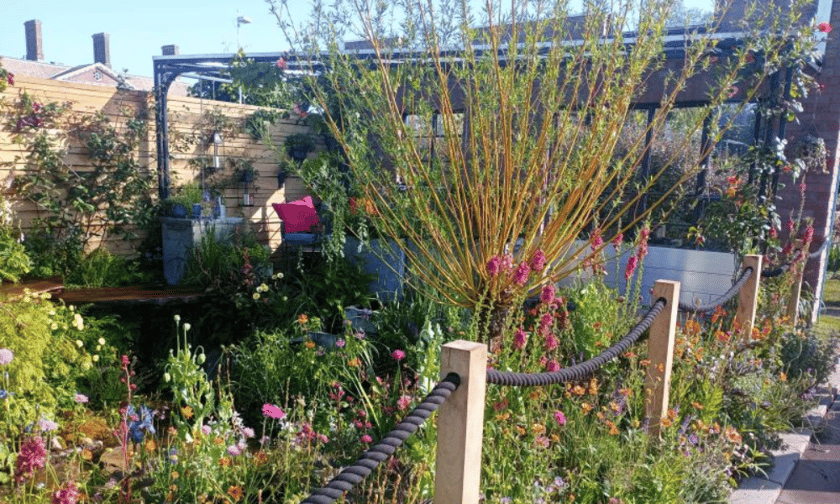

Image credit: Mia Wallace
Flood Re has unveiled the Flood Resilient Garden (pictured) at the RHS Chelsea Flower Show through a groundbreaking display.
Designed by Dr Ed Barsley and Naomi Slade, the Flood Resilient Garden is aimed at inspiring homeowners to transform their gardens into flood defences. Utilising sustainable drainage systems, flood-tolerant plants, and advanced water management techniques, the garden demonstrates how future landscaping can address the increasing threat of extreme weather.
Slade pointed out: “People spend a huge amount of time and money on their gardens, and floods can wreak havoc and cause a huge amount of disruption, heartache, and expense. The principles showcased within our Flood Resilient Garden are impactful, practical, and transferable, but crucially we’ve shown that making a garden more climate- and flood-resilient does not have to be a compromise on either its form or function.”
At the RHS Chelsea Flower Show, the garden is showcased via intentional flooding, highlighting how it adapts to varying water levels – the central swale transforming into a stream that directs rainwater to a feature pond for gradual absorption. Additionally, large water tanks serve dual purposes as ornamental ponds and water storage for later use.
Weather and climate change expert Laura Tobin, who provides commentary along with the display, noted: “The Flood Resilient Garden shows that adapting to climate change can still be beautiful and homeowners don’t have to give up having a lovely garden to make it work hard against extreme weather. It’s about blending smart, sustainable choices with thoughtful design to protect our homes and communities.
After this week’s RHS Chelsea Flower Show, the Flood Resilient Garden will be relocated to Howbery Business Park for public viewing, offering year-round education on flood resilience.
Flood Re chief executive Andy Bord stated: “Gardens bring joy to so many of us, but they also provide an important first line of defence to flooding. With this garden, we’re hoping to inspire more people to think about their flood risk and get smart with their spending by considering the plants and garden features that will both endure a flood and could also help reduce the physical destruction and psychological distress when a flood strikes.
“If flood-resilient features and water storage capacity were to become a feature of most gardens in a neighbourhood, the positive combined effect would be enormous.”
Barsley added: “With the increase in extreme weather events, heavy rainfall and flooding as well as drought, and even wildfires, many people are anxious. As individuals, they can feel powerless to make a difference. But gardens are hugely powerful tools and the Flood Re: The Flood Resilient Garden sends a positive message of agency and hope, and it is packed with practical, achievable ideas and solutions to enable people, as we adapt to the climate crisis.”
What do you think about this story? Share your thoughts in the comments below.
